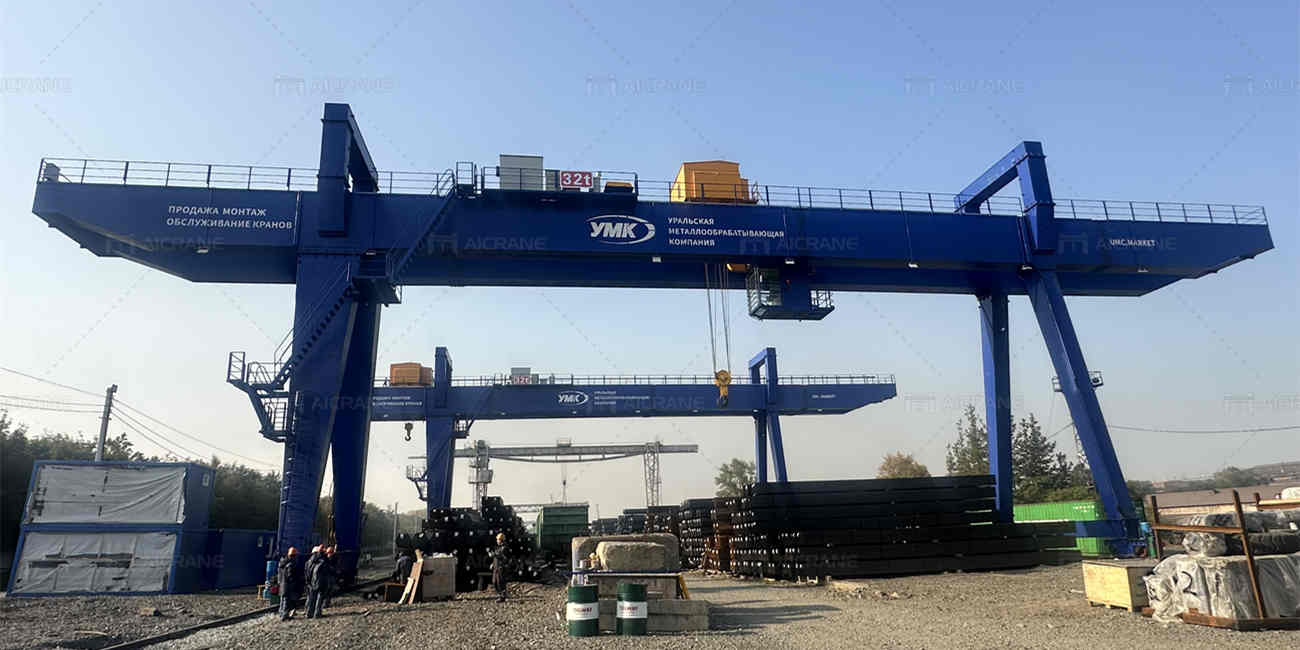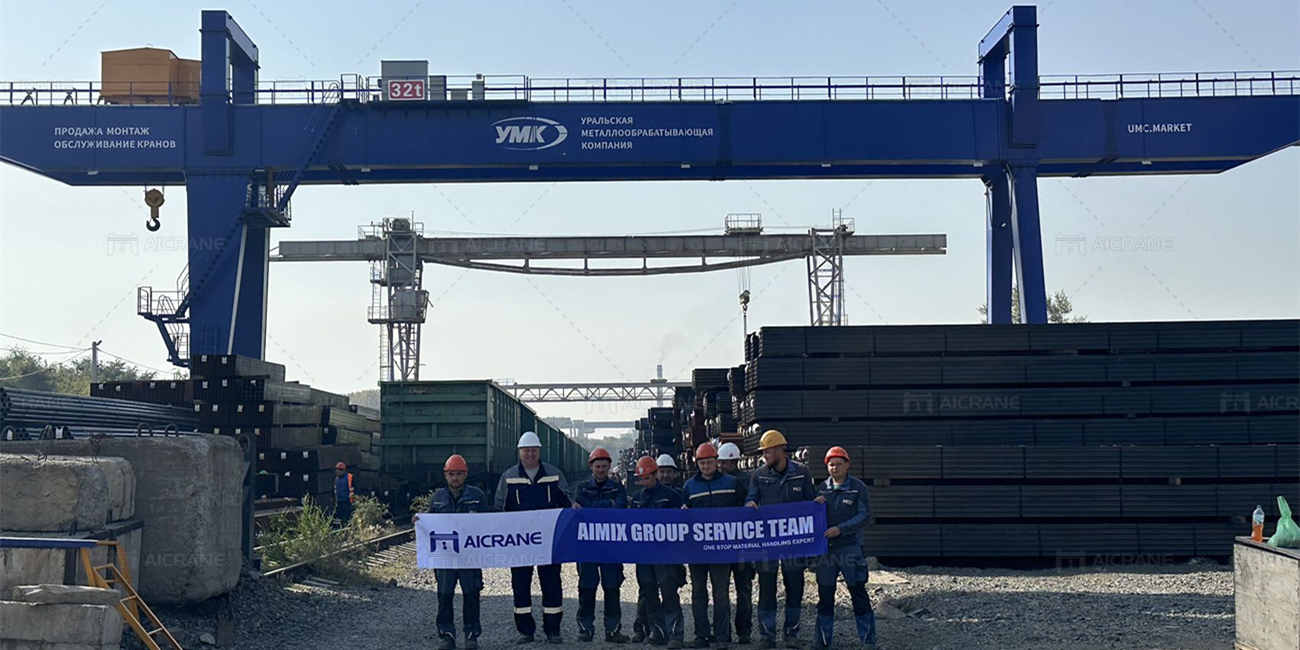A rail mounted gantry crane (RMG crane) is a versatile and efficient piece of equipment widely used in container yards, intermodal terminals, and industrial facilities. Its ability to handle heavy loads with precision and efficiency makes it indispensable for many projects. However, selecting the right RMG crane for your needs requires a clear understanding of its specifications. The rail mounted gantry crane specifications determine its performance, capabilities, and suitability for specific tasks, making them critical to the success of your project.
This guide explores the importance of understanding RMG crane specifications and how they influence your decision-making process.

Ensuring Compatibility with Project Requirements
RMG crane specifications include crucial details such as lifting capacity, span, lift height, speed, and rail gauge. Knowing these ensures the gantry crane matches your project’s requirements.
Lifting Capacity: This indicates the maximum weight the crane can handle. Overloading the crane can lead to accidents and equipment damage, while underutilization may result in unnecessary costs.
Span: The span, or the distance between the crane’s rails, must align with the width of your operational area.
Lift Height: This refers to the maximum height the container gantry crane can lift a load. It should accommodate your stacking needs, especially in container yards or warehouses.
By understanding these specifications, you can select a crane that performs efficiently without exceeding its limits.
Optimizing Space Utilization
The size and dimensions of an RMG crane directly impact how it fits within your workspace. Knowing the specifications helps optimize the layout of your facility.
Rail Gauge: This determines the distance between the crane’s rails. Selecting the correct gauge ensures the crane operates seamlessly within the existing rail infrastructure.
Crane Dimensions: The overall size of the crane, including its height and width, must be compatible with your operational area to prevent obstructions.
Properly matching specifications with your space can maximize productivity and reduce the risk of operational disruptions.
Enhancing Operational Efficiency
Specifications like hoisting speed, trolley speed, and traveling speed play a significant role in determining the efficiency of the RMG crane.
Hoisting Speed: A faster hoisting speed increases productivity by reducing the time required to lift and lower loads.
Trolley and Traveling Speed: The movement speeds of the trolley and crane itself affect how quickly loads can be transported across the workspace.
Selecting a crane with specifications that align with your workflow ensures smooth and efficient operations.

Adapting to Specific Applications
Different projects have unique requirements that demand specific crane configurations. Understanding RMG crane specifications helps tailor the equipment to your application.
Container Handling: If you are managing containers, the crane’s specifications must support standardized container sizes, stacking heights, and load weights.
Industrial Use: For industrial projects, the crane must be capable of handling raw materials, heavy machinery, or oversized components.
Knowing the specifications ensures the crane is equipped with the right features, such as specialized spreaders or lifting attachments, to meet your needs.
Ensuring Safety and Compliance
Safety is paramount in any project, and adhering to crane specifications is a critical aspect of maintaining a safe working environment.
Load Limits: Exceeding the crane’s lifting capacity can lead to accidents and equipment failure.
Structural Integrity: Specifications like wind resistance and stability under dynamic loads ensure the crane remains safe during operation.
Regulatory Compliance: Understanding specifications ensures the crane meets local safety and operational standards.
By prioritizing safety, you minimize risks to personnel and equipment while maintaining compliance with regulations.
Managing Costs Effectively
RMG crane specifications play a significant role in determining the cost of the equipment. Understanding these details helps you make cost-effective decisions.
Avoid Over-Specification: Purchasing a crane with capabilities far beyond your project’s needs can result in unnecessary expenses.
Prevent Under-Specification: On the other hand, selecting a crane that falls short of your requirements can lead to inefficiencies and additional costs for modifications or replacements.
Energy Efficiency: Specifications related to power consumption and energy efficiency impact operational costs over the crane’s lifespan.
Knowing the specifications allows you to strike a balance between cost and performance.
Simplifying Maintenance and Upgrades
Maintenance is essential to the longevity and reliability of an RMG crane. Familiarity with its specifications simplifies maintenance planning and future upgrades.
Component Identification: Detailed specifications help identify the correct parts and accessories for maintenance or replacements.
Compatibility with Upgrades: If you plan to enhance the crane’s capabilities, knowing its specifications ensures compatibility with new components or technologies.
Proper maintenance and upgrades keep the crane operating at peak efficiency, reducing downtime and extending its service life.
Facilitating Communication with Manufacturers
When procuring an RMG crane, clear communication with the manufacturer is vital. Specifications serve as a common language between you and the manufacturer.
Customized Solutions: Providing detailed specifications allows manufacturers like Aicrane to design cranes tailored to your needs.
Accurate Quotations: Knowing the required specifications helps manufacturers provide accurate cost estimates, avoiding surprises later.
Technical Support: During installation or operation, having a clear understanding of the crane’s specifications simplifies troubleshooting and support.
Effective communication ensures you receive a high-quality product that meets your expectations.
Planning for Future Expansion
Understanding RMG crane specifications also aids in planning for future growth or changes in your operations.
Scalability: If you anticipate increased workloads, choose a crane with specifications that accommodate expansion.
Adaptability: Opt for cranes with versatile features that can adapt to new applications or industries.
Planning with specifications in mind helps future-proof your investment.
Understanding rail mounted gantry crane specifications is crucial for selecting the right equipment for your project. These specifications influence compatibility, efficiency, safety, cost, and maintenance, ensuring the crane meets your operational needs. By carefully evaluating these details and aligning them with your project’s requirements, you can make informed decisions, maximize productivity, and achieve long-term success. Whether you are managing a busy container yard or handling industrial materials, knowing the specifications ensures your RMG crane operates efficiently and reliably.
